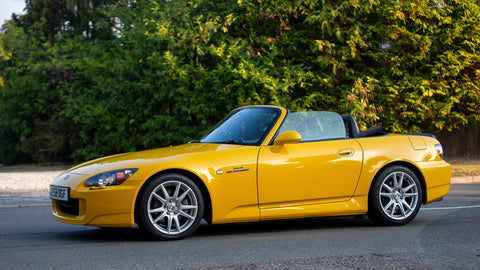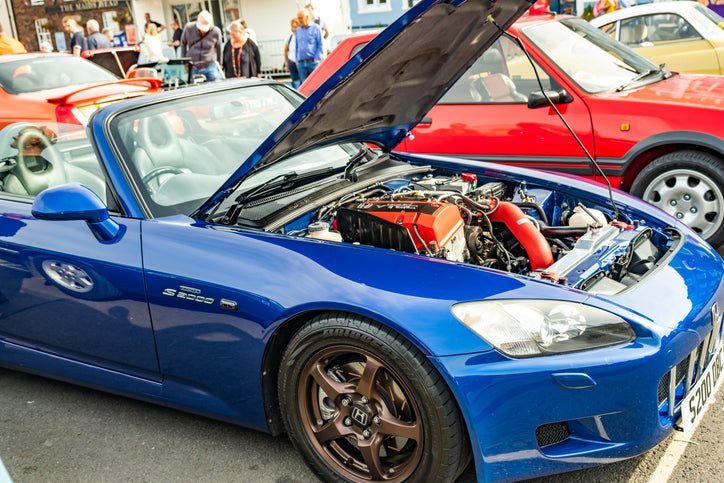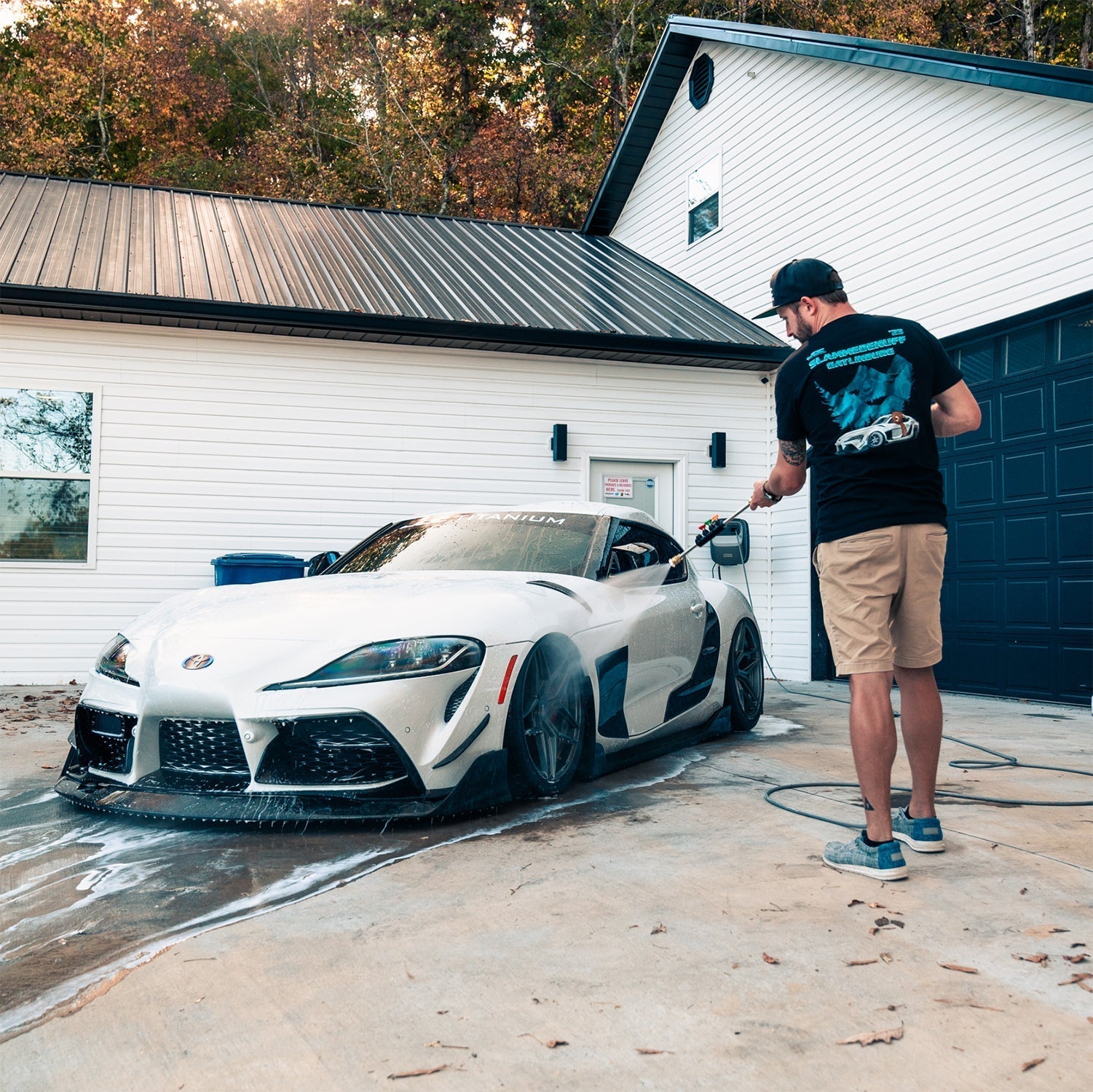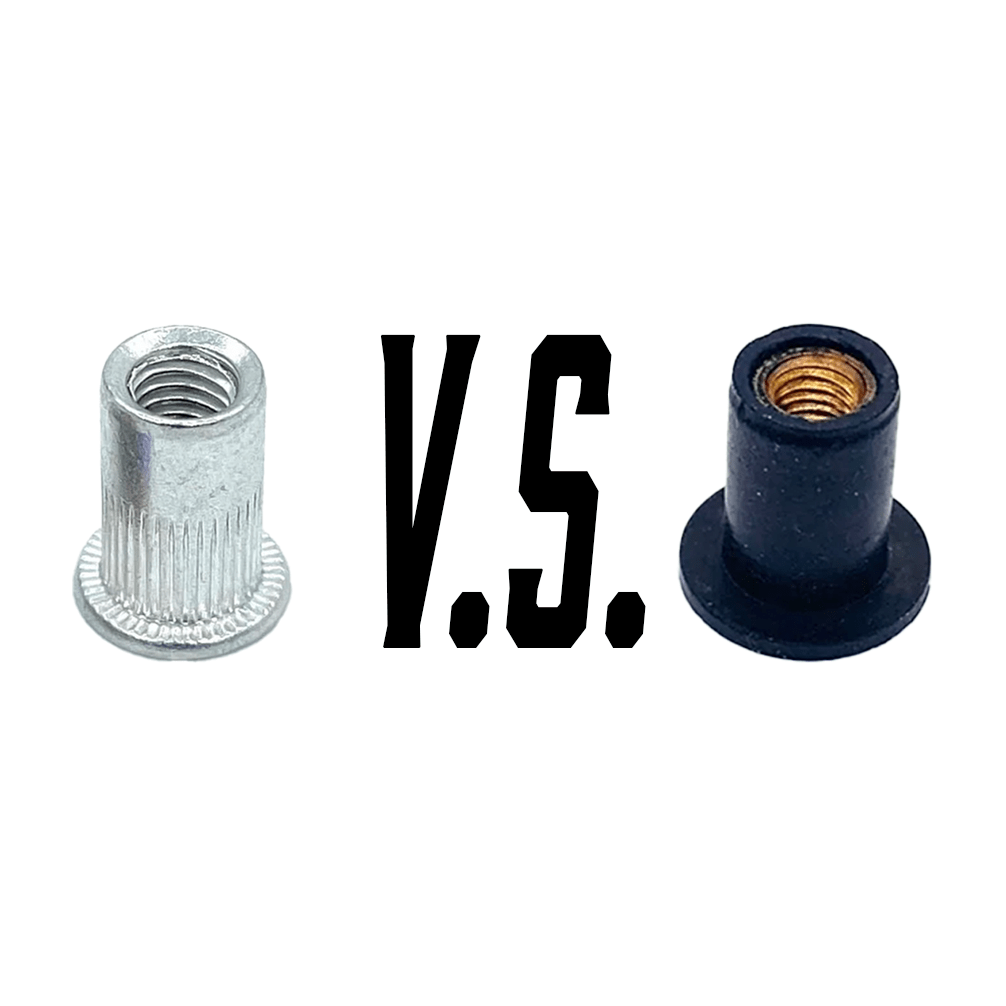While the Honda S2000 has been off the market for nearly 13 years, drivers across the country are still enjoying the raw driving dynamics of this incredible ride. Today, many cars fail to replicate Honda's famous roadster. Although the Toyota 86 and the Mazda Miata are similar vehicles with common characteristics, they still feel very different from the S2000.
If you're a proud owner of this amazing car, you probably cherish your ride each and every day. That said, you're likely aware of the several maintenance tasks to keep your precious vehicle in tip-top shape. While this includes changing the oil, inspecting the breaks, and ensuring your tires are inflated, you should also consider a clutch flush.
In this post, we'll discuss how to replace the clutch fluid on a Honda S2000. We'll also talk about where you can find some of the top performance parts in the industry!
What is a Clutch Flush?
First things first, it's important to note that clutch fluid is the same as brake fluid. The majority of cars have DOT 3 or DOT 4 brake fluid in the clutch reservoir. A clutch flush involves removing the old fluid in the clutch reservoir, cleaning out the old fluid, then adding new fluid.
When you depress the clutch pedal, this fluid moves from the clutch master cylinder into the slave cylinder. The pressure created in the fluid is then used to engage the clutch, helping you change gears. The clutch pedal releases after the clutch has been engaged, and the fluid then returns back to the clutch master cylinder.
Importance of Clutch Flush
A clutch flush is a preventative maintenance task that many Honda owners complete on their S2000 vehicle. It's also completed if there's a problem with the clutch system. One common issue is contaminated clutch fluid. This happens because the vents in the reservoir cap expose the fluid to atmospheric air. Over time, water is absorbed from this air, and the water moves through the clutch system. This can harm the hydraulic lines, master cylinder, and slave cylinder.
A clutch flush is performed to prevent issues in your system or to address an existing problem. Although not every driver changes this fluid, it can be beneficial. Once this fluid is added for the first time, it's clear in color. As the vehicle is used, the color will change to amber, then eventually black.
When to Replace Clutch Fluid in Honda S2000

Whenever you're doing maintenance inspections on your Honda S2000 manual transmission vehicle, don't forget about the clutch system. This area should be thoroughly examined by a trained professional. We recommend having this inspection during any checkup or service appointment.
There are two instances when your clutch fluid needs to be changed. The first scenario is when your fluid gets contaminated, which can happen when air or moisture enters the system. The second instance is when there's a leak. This is common when changing a component in the clutch system, leading to the fluid leaking out. This is why it's essential to always check the fluid levels and color. If the fluid isn't at the suggested fluid line or above, there could be a leak.
Some drivers will also change this fluid every few years as a preventative measure.
What You’ll Need
If you've decided to change your clutch fluid and flush the system, this is something you can handle yourself. However, you must have the right tools and a good understanding of the process. Also, it's best to find a friend who can help out. If not, you'll need to buy a special tool to get the job done.
To change the clutch fluid on a Honda S2000, make sure you have the following:
- 8mm wrench
- Funnel
- Work mat (optional)
- Turkey baster or syringe
- Container for old fluid
- Two bottles of brake fluid
- One foot of clear, thin tubing that's 1/4 inch thick
- A second person for assistance
After getting all the tools and products you need, we recommend researching the process. In addition to this article, several online videos can help. However, you shouldn't have any trouble with this task. If you can change your oil, changing your clutch fluid shouldn't be a problem.
The reason why you need a second person is so they can pump the clutch pedal while you bleed the system underneath the vehicle. This is referred to as the pedal pumping method.
Additionally, make sure you have the right brake fluid for the job. You'll want to find DOT 3 or DOT 4 brake fluid with a high boiling temperature. If you talk to Honda, they'll recommend using their own Honda DOT 3 fluid.
Basic Terms to Know:
As you're getting ready to change your clutch fluid and flush the system, you'll want to understand some basic terms. This can also help when you're doing research on the topic.
Make sure you understand the following:
Clutch Master Cylinder Reservoir |
This part holds the brake fluid. It attaches to the clutch slave cylinder with hoses. As you press on the clutch, the fluid flows from the cylinder reservoir to the slave cylinder. This applies the right amount of pressure to engage the clutch. |
Slave Cylinder Reservoir |
A slave cylinder helps to control the pressure in the clutch system. It works together with the clutch master cylinder to disengage the clutch and shift the transmission, which happens when you press the pedal. |
Bleeder Screw |
A bleeder screw is an essential part needed to bleed your clutch system. Located on the slave cylinder, the bleed screw is used to remove clutch fluid that may be dirty or contaminated. |
Clutch Pedal |
A clutch pedal is the third pedal found near the throttle and brake. The clutch pedal is typically located on the far left of all other pedals. The driver uses this pedal to operate the clutch and change gears. |
Clutch |
A clutch is a mechanical device used in manual transmission vehicles. Operated by the clutch pedal, the clutch helps to engage and disengage the engine from the transmission. This process allows you to change gears. The clutch contains the clutch disc, pressure plate, and flywheel. |
How to Clutch Flush the Honda S2000
After learning more about preparing for the process, it's now time to discuss the steps for clutch flushing your Honda S2000.
Check out these steps below:
Park on a level surface and lift the car
To use a ramp for a clutch flush, choose a sturdy ramp that can support the weight of your car and position it on a level surface. Slowly drive your car onto the ramp, engage the parking brake, and place wheel chocks behind the rear wheels.
To use a jack, you'll want to park on a flat surface, find the front center lift point, then jack up the car. It's also encouraged to use jack stands to boost safety.
Remove old fluid
The next step is to open up the hood and locate the clutch master cylinder. Then, using a turkey baster, syringe, or similar device, try to remove as much brake fluid as possible. Place the old fluid in a container. You should then prepare to add the new fluid.
Refill the clutch fluid
As the fluid is ready to be added, place the funnel inside the clutch master cylinder. If you decide to use a work mat, lay it on the side of your vehicle to protect the paint. Brake fluid can easily damage your paint if not wiped up right away.
Bleed the clutch system
- Crawl under the vehicle.
- Locate the slave cylinder, which is near the center of the car on the driver's side of the transmission.
- Remove the cap on the bleed screw.
- Attach the clear tubing to the bleed screw to drain out the fluid. Make sure the other end of the tube flows to the old fluid container.
- Grab your 8mm wrench and tell your friend to hop in the driver's seat.
- Alternate between pressing down on the clutch pedal and bringing it back up while you screw and unscrew the bleed screw. When you open the bleed screw, press down on the clutch. As you close the bleed screw, have your friend lift up the pedal. You should see fluid in the tube throughout the process.
- Continue this method until new, clear fluid is moving through the tubing.
Check fluid level
After you bleed the system, check the fluid level to ensure it looks good.
Lower the car
If everything checks out, you're ready to lower the vehicle.
Test the clutch
Next, test the clutch to make sure everything works as it should.







Share:
The Ultimate Guide to Replacing Factory Hardware with Titanium
Discover the Advantages of JDC Titanium Lug Nuts!